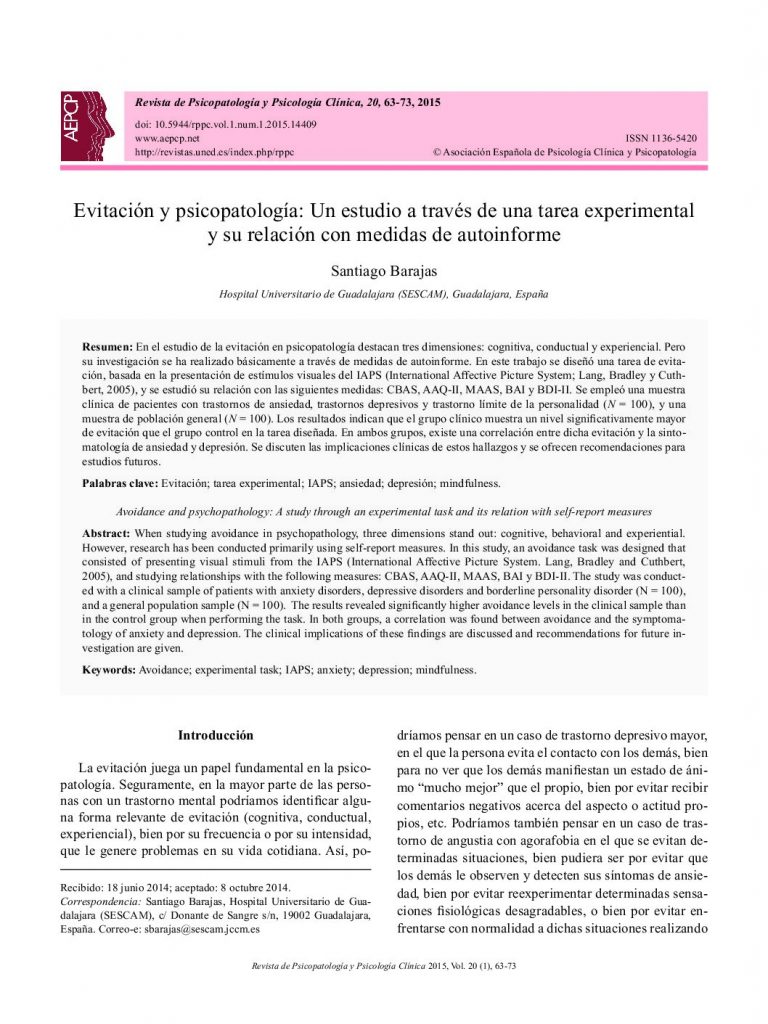Evitación y psicopatología: Un estudio a través de una tarea experimental y su relación con medidas de autoinforme.

- Maximizar la terapia de exposición: Un enfoque basado en el aprendizaje inhibitorio.
- The influence of demographic and clinical variables on perceived social support in cancer patients.
- Contenidos obsesivos, miedo a la enfermedad y asco.
- Deliberate self-harm in adolescence: The Impact of childhood experiences, negative affect and fears of compassion.
- Autolesiones no suicidas en adolescentes: revisión de los tratamientos psicológicos.
- Evitación y psicopatología: Un estudio a través de una tarea experimental y su relación con medidas de autoinforme.
- El psicólogo y la procreación aplazada: Consideraciones acerca de la criopreservación y de una calidad óptima de gametos.
When studying avoidance in psychopathology, three dimensions stand out: cognitive, behavioral and experiential. However, research has been conducted primarily using self-report measures. In this study, an avoidance task was designed that consisted of presenting visual stimuli from the IAPS (International Affective Picture System. Lang, Bradley and Cuthbert, 2005), and studying relationships with the following measures: CBAS, AAQ-II, MAAS, BAI y BDI-II. The study was conducted with a clinical sample of patients with anxiety disorders, depressive disorders and borderline personality disorder (N = 100), and a general population sample (N = 100). The results revealed significantly higher avoidance levels in the clinical sample than in the control group when performing the task. In both groups, a correlation was found between avoidance and the symptomatology of anxiety and depression. The clinical implications of these findings are discussed and recommendations for future investigation are given.
En el estudio de la evitación en psicopatología destacan tres dimensiones: cognitiva, conductual y experiencial. Pero su investigación se ha realizado básicamente a través de medidas de autoinforme. En este trabajo se diseñó una tarea de evitación, basada en la presentación de estímulos visuales del IAPS (International Affective Picture System; Lang, Bradley y Cuthbert, 2005), y se estudió su relación con las siguientes medidas: CBAS, AAQ-II, MAAS, BAI y BDI-II. Se empleó una muestra clínica de pacientes con trastornos de ansiedad, trastornos depresivos y trastorno límite de la personalidad (N = 100), y una muestra de población general (N = 100). Los resultados indican que el grupo clínico muestra un nivel significativamente mayor de evitación que el grupo control en la tarea diseñada. En ambos grupos existe una correlación entre dicha evitación y la sintomatología de ansiedad y depresión. Se discuten las implicaciones clínicas de estos hallazgos y se ofrecen recomendaciones para estudios futuros.



